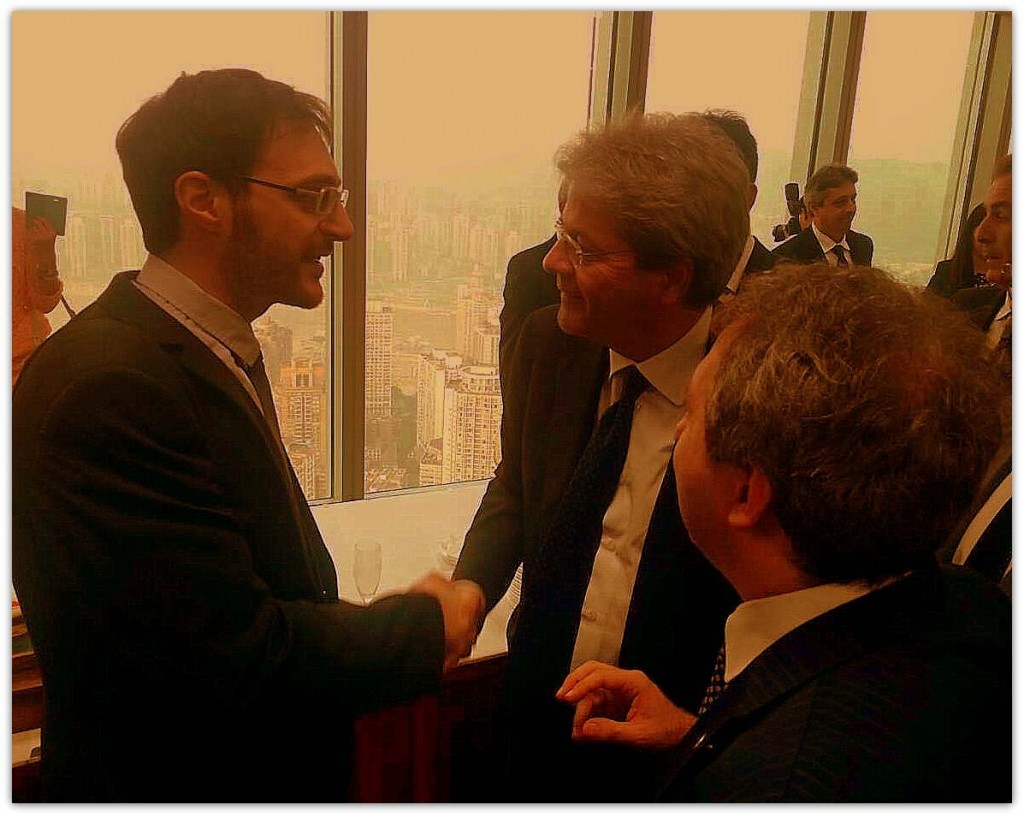Italy and Chongqing: closer than ever
In recent years, China has adopted a series of strategic measures to shorten the economic inequality between its eastern and western regions. The West Triangle Economic Zone is an economic zone designated by the Chinese government, comprising Chengdu, Chongqing and Xi’An. Created as part of the China Western Development strategy, the zone contributes nearly 40% of Western China’s GDP.
A succession of crucial events, such as the strategy for western regions’ development, the Three Gorges Project and the establishment of the Chongqing Municipality directly under the Central Government, has created a macro-environment for Chongqing to become a main center for regional economic development. With 32 million inhabitants and a growth rate of 11 percent in 2014, Chongqing’s goal is to be a key financial center and a free trade zone (€89 billion by 2015), as well as a transport hub. A new cargo train was inaugurated in 2014 linking Europe and Chongqing, and marking the latest step in the building of the New Silk Road economic belt. The Economic and Technological Development Zone, together with the Chongqing High-Tech Industrial Development Zone and the Chongqing Export Processing Trade Zone are expected to significantly boost regional economy.

It should not be surprising that Chongqing has become one of the major Italy’s trading partners, with an import-export volume that reached €598 million in 2014. In addition, Chongqing local brands Lifan and Xinyuan have branches in Italy with investments accounting for €19 billion.
This also explains the visit of the Italian Minister of Foreign Affairs and International Cooperation, Paolo Gentiloni, who arrived in Chongqing on April 28 in order to further consolidate Italy’s ties with one of the most rapidly expanding hubs of the Chinese southwest. “Chongqing is an extremely vital component in China’s renewed interest in the silk road. The future is China, and within China the future is Chongqing. So we are here to work together to achieve successful joint results”, he said.
Automation, robotics and agriculture were among the topics discussed by Gentiloni and Sun Zhengcai, the Communist Party Secretary of Chongqing municipality. As a matter of fact, Chongqing is currently China’s third largest motor vehicle producer and the first largest producer for motorcycles. Fiat is already present on the territory in the form of a joint-venture between Saic and Iveco and dealing with industrial vehicle production. “Investing in Chongqing does not mean investing in a city. It means investing in one of the fundamental driving forces behind China’s economic growth”, Gentiloni continued. He added that Italy considers the city “a nexus for strategic development in China in the upcoming years”.

During his visit, Gentiloni also inaugurated the new Italian Consulate General and its visa office, officially opened in December 2013. Italy’s Ambassador to China, Alberto Bradanini, Italy’s Consul General in Chongqing, Sergio Maffettone, and Chongqing’s Deputy Mayor, Chen Liuping, were present at the ceremony.
The minister also attended the signature of two cooperation agreements of the Italian Consulate in Chongqing with the Chongqing Foreign Trade and Economy Relations Commission, and with the China Council for the Promotion of International Trade Chongqing Sub-Council, in charge of the Chinese pavilion at the Milan Expo. The agreements aim at establishing a systematic, long-term cooperation platform for mutual trade and at supporting potential relevant moves of the “One Belt and One Road” strategy.
Moreover, the day before Gentiloni’s arrival, Hainan Airlines, which is China’s first private carrier and the country’s fourth largest one, inaugurated the Rome-Chongqing direct flight, thus making Rome the second non-Chinese city, after Helsinki, to have a direct connection to Chongqing. From now on, this megalopolis will certainly be more familiar to Italian people. Italians, welcome to Chongqing!




